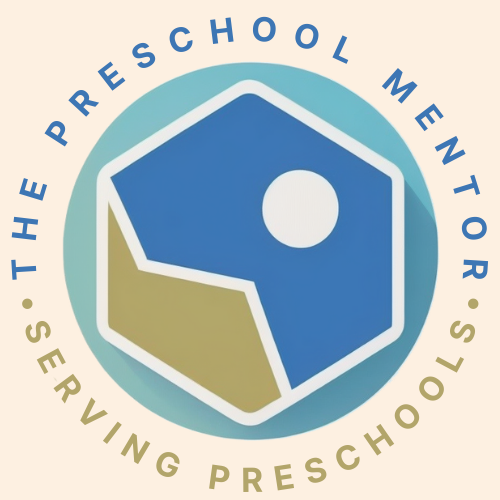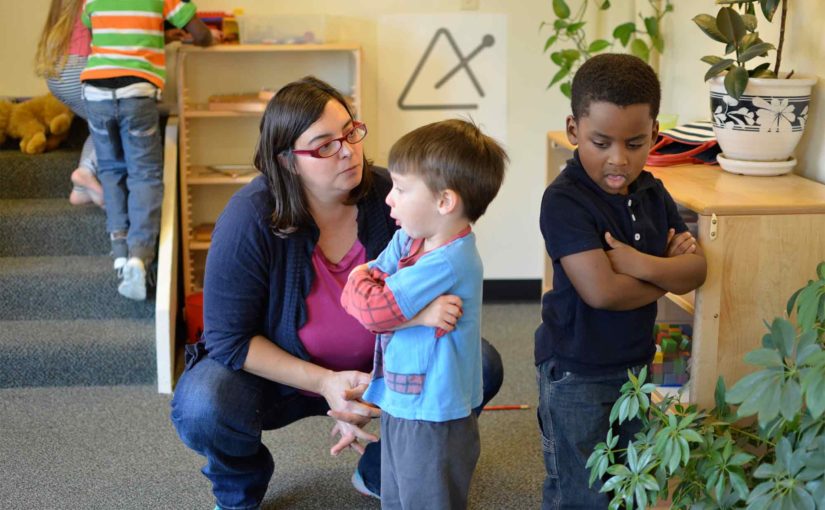If there are multiple children engaging in play together, you can be sure that conflicts are going to happen. Since play is considered the work of children, using it as a way to teach conflict resolution makes sense, right?
One of the primary things that children learn in preschool is how to get along with and play with others. They will be interacting with others for the rest of their lives- it’s never too early to start teaching them. When they are sharing attention, space, toys, and other things with each other- you can be sure that a conflict is going to break out. Unfortunately, many times the first response both parents and teachers have is to rush in and break it up when the yelling, kicking, and pushing starts.
However, you must understand that each and every conflict is a perfect teaching opportunity. The children in the middle of it as well as those who are observing it can use what they see and experience to settle conflicts in the future.
They Don’t Really Know
Many adults will typically say something like, “use your words” when they see preschoolers fighting. Sure, it’s great advice- however, children are not born with these “words” pre-loaded into their brains. They need us to teach them.
In a preschool class, the children are making a major transition. Not long ago, most of them were toddlers and they were the center of the universe. Perhaps they do have younger or older siblings- but they still had their own little niche in their personal ecosystem.
Then, all of a sudden, they’re around a dozen or so other children who are their own age and side. At this point, they’re expected to share resources, coexist with others, and find a new identity in this world. Therefore, you shouldn’t be taken by surprise if conflict starts on the very first day.
Following are a few questions that preschoolers have and will need to find answers for- with a little help from us:
- What do you do when you are hurt by someone?
- What if you want something that someone else is using?
- What if someone takes something from you?
- How do you handle your big feelings?
Teach Them the Words
This process of teaching them the words starts with labeling feelings. You can find picture books on this topic and read to your class about the range of feelings. Have them make angry faces and sad faces. Allow them the opportunity to describe what is going on inside of them.
Then, be sure to acknowledge that everyone has feelings and they are perfectly natural. Everyone feels nervous, jealous, happy, and even disappointed from time to time. Bring in some examples from your own life and explain to them how you reacted to your emotions. Teach them the right way to respond versus the wrong way.
We All Need Practice
As teachers, we need to learn how to anticipate conflicts both in the classroom and out on the playground. When waiting in line, children may have some difficulties in respecting each other’s personal space. They may bump into each other by accident. You may have two children who want to play with the same toy. Therefore, it’s a good idea to teach the children- and to help them practice- before these situations arise.
You can do this by asking for two volunteers- or choosing two students- to come to the front of the class. The scenario is this: while drawing, they both reach for the same color. Ask them what emotions they feel. Maybe one of them is jealous because the other one gets to draw purple stars. One of them may be upset that the marker was taken out of his/her hand. One- or both- may feel a bit of frustration because he/she thinks that he/she never gets what they want.
After exploring the situation, ask them how to deal with the situation. The best thing is for them to talk it out, realizing that while they both want the same thing- there are things that can be done to solve the conflict:
- Take turns
- Flip a coin
- Play rock/paper/scissors
Instead of a fight occurring, a game has just occurred. They can also ask around to other tables to see if anyone has a purple marker they can borrow. One child can take this opportunity to take his or her artwork in a brand-new direction. Since they can’t use the purple marker right now- perhaps they may consider making blue or green stars instead.
You can use this for any situation that could potentially bring about conflict. Go back and revisit problems you’ve had in the past and have them practice how they can do it better next time it happens.
Create a Conflict Resolution Plan
However, no matter how well prepared you and your preschoolers are, problems are still going to occur. Take some time to consider these fair- and consistent- methods from the High/Scope Foundation for how you will react when your students come running to you crying and blaming others.
- No matter what, it’s critical that you always stay calm. Get down on their level and speak slowly and steadily.
- Let them know that you understand by saying something like, “I see that you’re upset.” Or “You look frustrated.”
- Ask them questions about the conflict- and really listen. Make sure that you get both sides of the argument before you hand out any type of punishment.
- Repeat back to them what you know. One of the things that is upsetting to children is not being understood.
- Ask them what they think should be done about the problem. This allows them to take ownership and be part of the solution.
- Praise/reinforce them being able to identify how they were feeling and work through the conflict.
- Keep an eye on them from a distance and make sure they are sticking to the agreement. Pay attention for any further flare-ups and praise them when you see they are playing nicely with each other.
Even Adults are Playing
Every situation, no matter if it involves family, office staff, classmates, social groups, and more- is just one big playground. We all need to learn, understand, and stick to the rules so that we can play fair. We need to learn how to share, to avoid bullying each other, and to communicate how we are feeling. From the beginning to the end of our days, the game will always stay the same- the only thing that changes are the field and the players around us.
As teachers, we need to accept and understand that preschoolers are not born knowing how to play and to anticipate/facilitate conflict. When we teach them about anticipating and dealing with conflicts and congratulating them every time they succeed at getting along, we can have a hand in creating amazing adults that will be able to work well together.
Image Credit: highscope.org


Leave a Reply